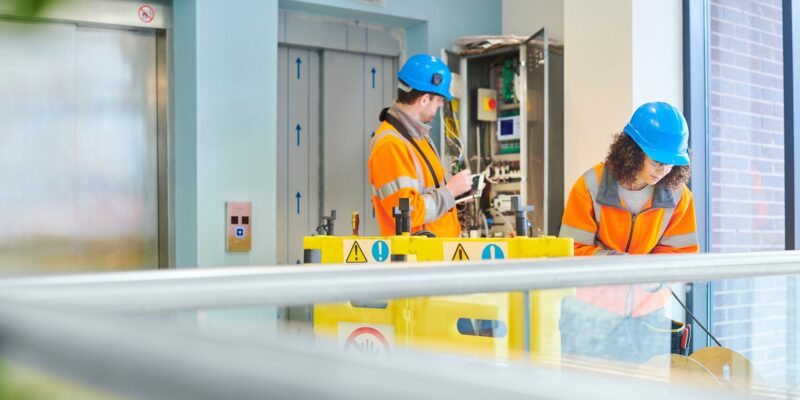Professional Lift and Engineering Services Tailored to Your Needs
Wiki Article
The Relevance of Routine Upkeep to Safeguard the Efficiency of Lifts
In the world of upright transportation, elevators play a critical role in ensuring smooth mobility within numerous facilities. The functional efficiency of lifts rests upon thorough upkeep procedures that commonly go unnoticed yet are crucial for their appropriate functioning. Normal maintenance not just guarantees the smooth procedure of elevators yet also offers as a positive measure to prevent possible malfunctions that could hinder their performance. The true relevance of sticking to suggested maintenance routines extends past plain functional performance.Importance of Lift Upkeep
Lift upkeep is a crucial technique for guaranteeing the safety and security and trusted procedure of vertical transportation systems. Routine maintenance not just prolongs the lifespan of elevators but likewise minimizes the risk of unforeseen malfunctions that can aggravation structure owners and site visitors. By sticking to a scheduled maintenance plan, structure proprietors and center supervisors can detect and resolve prospective issues before they escalate right into significant issues, thus lessening expensive repair work and downtime.In addition, elevator maintenance plays a vital role in promoting conformity with safety laws and criteria. Regular inspections and servicing aid to recognize and remedy any kind of safety hazards quickly, making sure that the lift operates within specified security parameters. This positive approach not just protects the well-being of passengers but likewise guards the building owner from lawful liabilities in case of crashes or injuries.

Cost-Efficiency of Routine Servicing
Making certain routine servicing of upright transport systems can cause considerable expense financial savings and operational efficiencies for structure proprietors and facility supervisors. By investing in routine upkeep for lifts, potential problems can be recognized and addressed quickly, preventing much more extensive and costly repair services in the future. Normal maintenance assists to extend the lifespan of lift components, decreasing the need for premature substitutes that can strain the budget plan.Furthermore, properly maintained elevators are more energy-efficient, as efficiently running systems take in less power. Reliable lifts additionally add to improved tenant satisfaction and retention, as residents benefit from reliable upright transport that operates seamlessly.
Precaution and Examinations
To keep the cost-efficiency and functional effectiveness attained through routine servicing of upright transport systems, thorough security actions and assessments are important components of an elevator maintenance program. Security actions encompass an array of protocols developed to prevent mishaps, minimize dangers, and make sure the well-being of lift individuals.Along with regular evaluations, lift lift repair company upkeep programs need to consist of periodic safety tests to validate the appropriate functioning of critical security attributes, such as emergency brakes, overspeed guvs, and door sensing units. These tests help make certain that the elevator system meets sector security requirements and laws. By prioritizing precaution and assessments, building owners and facility supervisors can improve the dependability of their vertical transport systems and give a secure atmosphere for occupants and visitors.
Enhancing Lift Performance
By carrying out positive upkeep techniques, centers can optimize lift efficiency and minimize downtime. Enhancing lift performance includes a combination of routine upkeep, innovation initiatives, and technological innovations. Regular maintenance jobs such as lubricating moving parts, readjusting door mechanisms, and checking electrical parts can considerably enhance the effectiveness and life-span of elevators. Additionally, innovation jobs can update older systems with new technologies, improving energy performance and ride comfort.Technological innovations, such as destination dispatch systems and anticipating maintenance tools, can also enhance lift efficiency by maximizing web traffic flow and identifying potential concerns before they create downtime. These developments not just enhance the overall effectiveness of elevators yet additionally boost guest experience by decreasing delay times and offering a smoother experience.

Ensuring Customer Complete Satisfaction
Structure upon the structure of improved lift efficiency through normal maintenance and modernization efforts, the focus currently shifts in the direction of optimizing customer contentment within the lift experience. One crucial element is the reliability of the lift system, where individuals anticipate minimal downtime and reliable operation.
Verdict
In conclusion, regular upkeep of lifts plays an important duty in guaranteeing their efficiency, performance, and safety and security. Regular upkeep is a crucial practice to secure the effective operation of lifts in both industrial and household buildings.Elevator upkeep is a necessary practice for making certain the security and dependable operation of upright transport systems.To keep the cost-efficiency and functional effectiveness accomplished through regular servicing of vertical transport systems, comprehensive security measures and assessments are crucial components of a lift maintenance program (lift maintenance contract).In addition to routine inspections, elevator maintenance programs need to include periodic safety and security tests to validate the correct performance of important safety and security attributes, such as emergency situation brakes, overspeed governors, and door sensing units.Structure upon the foundation of boosted lift efficiency via regular upkeep and innovation efforts, the emphasis now moves towards enhancing individual complete satisfaction within the elevator experience.In final thought, normal maintenance of lifts plays a vital role in ensuring their safety and security, performance, and performance
Report this wiki page